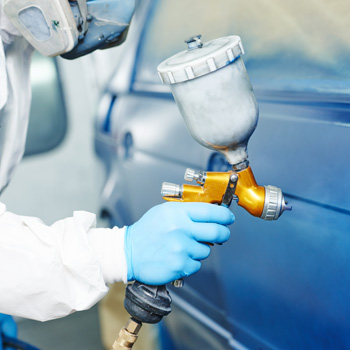 Over the past few years, there's been growing awareness about the risks associated with solvents—chemicals used to dissolve other materials and form solutions. As a result, companies like DaSilva’s have taken steps to reduce or eliminate the use of VOC-based paints in their operations.
Over the past few years, there's been growing awareness about the risks associated with solvents—chemicals used to dissolve other materials and form solutions. As a result, companies like DaSilva’s have taken steps to reduce or eliminate the use of VOC-based paints in their operations.
Solvents are found in many everyday products, such as cleaning agents, adhesives, paint thinners, detergents, and furniture polishes. You'll often see them listed on labels as toluene, xylene, acetone, or Ethyl Acetate. These chemicals help dissolve ingredients and then evaporate once the product is applied. However, their presence can be more dangerous than it seems.
While occasional exposure might not be too harmful, activities like spray painting cars can lead to high levels of solvent exposure. This increases the risk of both short-term and long-term health effects, which can be serious and even irreversible.
The Dangers of Solvents
Solvents, also known as volatile organic compounds (VOCs), don’t just evaporate—they release harmful toxins into the air. For people who work with these substances regularly, inhaling VOCs can cause damage to soft tissues in the brain and nervous system, leading to symptoms like dizziness and confusion.
Over time, this damage can accumulate and lead to chronic toxic encephalopathy, a condition that affects memory, coordination, and cognitive function. Long-term exposure has also been linked to serious health issues, including liver and kidney damage, respiratory problems, skin conditions, and an increased risk of cancer.
New research from the Harvard School of Public Health shows that repeated exposure to solvents can have lasting effects. Some cognitive decline may not appear for 30 to 50 years after initial exposure! The study highlights that higher exposure correlates with greater loss of attention, speed, and memory over time.
Common Sources of Solvent Exposure
Many household items contain solvents, such as glues, epoxy, and asphalt. While most exposure happens through breathing, direct skin contact or ingestion without proper protection can also be dangerous. What are the possible consequences?
- Short-Term Effects: Symptoms like dizziness, nausea, headaches, and difficulty coordinating can appear quickly. Skin irritation, rashes, and respiratory issues are also common.
- Long-Term Exposure: Prolonged exposure can lead to severe issues, including vision loss, organ damage, nerve disorders, and irregular heartbeats. If the solvent is a known carcinogen, the risk of certain cancers, like breast cancer, increases significantly.
A recent study by the Endocrine Disruption Exchange (TEDX) and the University of Colorado, Boulder found that even low-level, repeated exposure to solvents can disrupt the endocrine system. This disruption can affect hormone balance and lead to issues such as lower fertility rates, premature births, abnormal sperm counts, and cardiovascular problems in unborn children.
Environmental Impact of Solvents
When VOCs mix with nitrogen oxides and sunlight, they create ground-level ozone—a harmful pollutant that can damage crops, plants, and even buildings. This smog-like substance poses a threat to both human health and the environment.
Historically, companies disposed of solvents by pouring them into the ground, assuming they would simply evaporate. Instead, they seeped into soil and groundwater, contaminating water supplies in areas with shallow soil layers. People exposed to contaminated water through drinking, cooking, or showering can unknowingly ingest these harmful chemicals.
Additionally, solvents can migrate into building foundations and underground utilities, causing long-term structural damage. They can also enter indoor spaces through a process called vapor intrusion, making homes and offices unsafe over time.
To help protect both people and the planet, DaSilva’s Auto Body offers eco-friendly and green services. Our low-VOC paints and responsible disposal practices ensure safer environments for our customers and employees. If you're looking for a reliable, environmentally conscious auto body shop, give us a call at our Naugatuck location today. We’re here to help you keep your vehicle looking great while protecting your health and the environment.
Nitrile Butadiene Rubber
Nirile butadiene rubber Latex
Nitrile rubber is produced by emulsion polymerization of butadiene and acrylonitrile. Nitrile rubber is mainly produced by
low-temperature emulsion polymerization. It has excellent oil resistance, high wear resistance, good heat resistance and strong
adhesion.Nitrile rubber is mainly used in the manufacture of oil resistant rubber products.NBR for short, a synthetic rubber
made by copolymerization of butadiene and acrylonitrile.It is a synthetic rubber with good oil resistance (especially alkane oil)
and aging resistance.Acrylonitrile content (%) in nitrile rubber has 42 ~ 46, 36 ~ 41, 31 ~ 35, 25 ~ 30, 18 ~ 24 and other five
kinds.The higher the content of acrylonitrile, the better the oil resistance.
Widely used in making various oil resistant rubber products, a variety of oil resistant
gaskets, gaskets, sleeves, flexible packaging, soft rubber hose, printing and dyeing cots, cable rubber materials, etc., in the
automotive, aviation, petroleum, copy and other industries become essential elastic materials.
Nitrile Butadiene Rubber,Nbr Latex Nitrile Liquid,Butyronitrile Latex Nbr,Material Nbr Latex Nitrile
SHANDONG S-SAILING CHEMICAL CO,LTD , https://www.sdqh-chem.com
 Over the past few years, there's been growing awareness about the risks associated with solvents—chemicals used to dissolve other materials and form solutions. As a result, companies like DaSilva’s have taken steps to reduce or eliminate the use of VOC-based paints in their operations.
Over the past few years, there's been growing awareness about the risks associated with solvents—chemicals used to dissolve other materials and form solutions. As a result, companies like DaSilva’s have taken steps to reduce or eliminate the use of VOC-based paints in their operations.